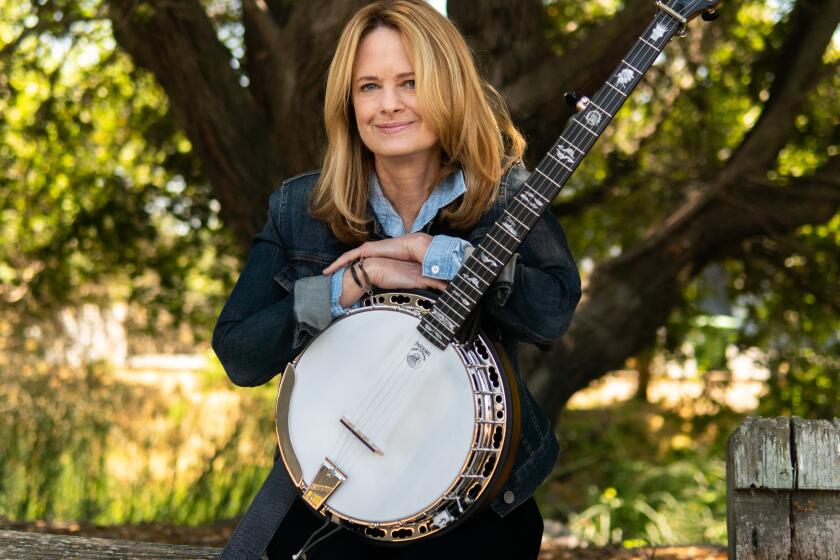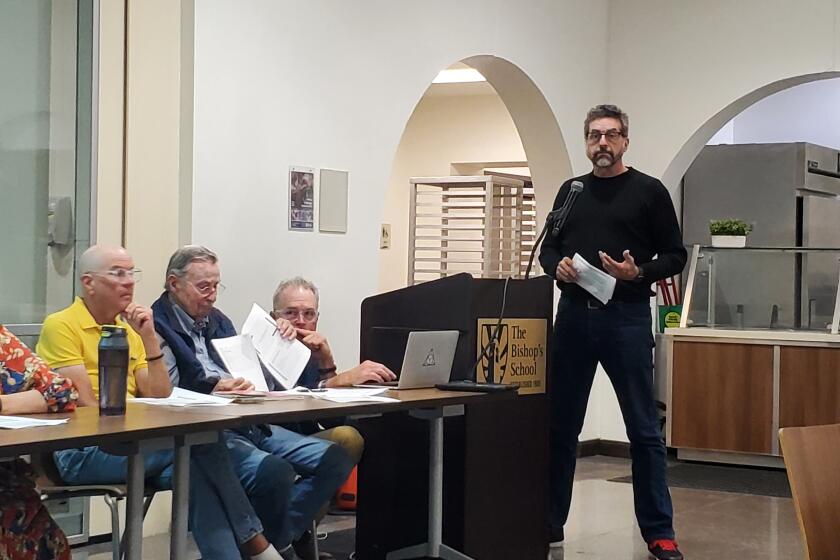La Jolla Library hosts wildfire preparedness panel: ‘Don’t think because you’re in a beach area, that you’re safe’
As the largest wildfire in California’s history raged in Mendocino County, which as of press date has burned over 28,000 acres, killed one firefighter and is 67 percent contained, Congress member Scott Peters’ office (D-CA 52nd District) organized a wildlife preparedness panel discussion Aug. 7 at the La Jolla Riford Library.
“Don’t think because you’re in a beach area, that you’re safe. It’s 91 degrees and dry outside. The weather is doing nothing to help us with the vegetation (that fuels fires),” said San Diego Fire and Rescue Deputy Fire Chief Doug Perry. “I wish I had good news for you, but I don’t. If you think wildfire has been an issue in the past, I’m telling you this year will be one that everyone will remember.”
As part of a larger panel that also included representatives from the IRS and Small Business Administration, Perry shared ways La Jollans can keep themselves safe, the unique challenges residents of the Mount Soledad face, and the lessons learned from previous fires that affected the Southern California area.
Defensible space
When it comes to keeping one’s home safe, defensible space (the area around a structure where combustible vegetation that can spread fire has been cleared, reduced or replaced; seen as a barrier between a structure and an advancing fire) is considered the most important thing.
Tips for creating defensible space include: maintaining the landscaping in the first 50 feet around the home, ideally with fire resistant plants; thinning vegetation in the 50 surrounding feet beyond that and creating a “reduce fuel zone,” removing dead wood and vegetation from gutters and surrounding the house; moving items that would easily ignite away from propane tanks; and more.
“You are our best ammo to keep your area safe,” he said. “If you see something growing into defensible space, prune it. Be proactive when you leave today, check out your home, because we still have months and months of this type of weather. There isn’t a fire season anymore, it’s year round (the Thomas Fire, he noted, started in December 2017).”
Mount Soledad
In areas like Mount Soledad, he said, being proactive is especially important.
“What scares us about Mount Soledad is that there are narrow ingress and egress roads, steep roads, the terrain and topography is the same as the Oakland Hills fire in the early 1990s, and there were a lot of people who lost their lives in that fire,” Perry said. “On top of that, the vegetation is dry. Even without the wind, we have the potential for a large fire that will travel really quickly. But we know the fire behavior, so we’ve done a lot of pre-planning.”
Further, with narrow roads comes the risk of people double parking or parking in red zones, which poses a serious challenge to emergency response vehicles.
“Our rigs, mirror to mirror, are 10-feet, two-inches. So when you see double parking on these very narrow streets, we truly can’t get our rigs through at any rate of speed. In the event of a wildfire, you will have a very limited amount of time to get out for us to get in,” he said.
Previous local fires
Reflecting on past fires and the lessons learned from them, he noted in particular, the Cedar Fire of 2003, which burned 273,246 acres in San Diego County; and the Thomas Fire of 2017, which burned 281,893 acres in Ventura and Santa Barbara counties. In those incidences, crews were dispatched en masse to other areas, and were not available in the numbers they needed locally to fight fires, as was the case with the Cedar Fire.
“We made a promise to never repeat what happened in ’03,” Perry acknowledged. “Here in San Diego we call ourselves the cul-de-sac because the weather starts up north, the fires burn up north, the units start going up north and then all the resources are up north when the fire hits here. So I can tell you as of today, we are not sending any more resources north. We are concerned about what could happen down here.”
He added there are 150 to 160 San Diego firefighters battling the blaze in Mendocino.
Perry concluded:“The conditions we’re seeing this year, we have never seen before. I’ve been with the fire service for 41 years, so I know we said that in 2003, 2007 and 2014, but this year, I’m scared for my family; I’m scared for this community because we don’t know how to fix it. These fires don’t slow down or stop until Mother Nature says so.”
Other speakers take the mic
Organizer Congress member Peters also offered some remarks and his perspective from the political standpoint. “We know that fire has greatly affected San Diego and no community is immune … so it’s really important you come out and empower yourself to know the right thing to do,” he opened.
He said evidence is suggesting wildfires are becoming more aggressive and the fire season is now year-round. “Wildfires cost the country more than $10 billion in 2017, and we may well surpass that in 2018.”
Offering a proactive approach, Fire Safe Council of San Diego County community outreach specialist Britney Munoz suggested forming a local Fire Safe Council (there are 38 countywide, but the closest ones to La Jolla include Scripps Ranch and Tierrasanta).
“A Fire Safe Council is a coalition of public and private organizations that share a common vested interest in wildfire prevention and mitigation,” she said. “We put together community wildfire protection plans, which include evacuation routes, create disaster preparedness packs for people and pets, and more, depending on the needs of the community.”
Residents can form a Fire Safe Council by forming a four-member board, developing a mission statement, holding at least two meetings a year and a few other prerequisites. Once a risk is identified, Munoz advises meeting with local CalFire offices to develop a plan catered to the neighborhood.
The Fire Safe Council of San Diego County also provides assistance programs to create defensible space for low-income seniors and those with disabilities.
Want to Know More?
Full checklist on creating defensible space: readysandiego.org
Evacuation checklist, including what to do long before a fire threatens and what to do if evacuation is a possibility: fire.ca.gov
Local prevention tips: firesafesdcounty.org
Get the La Jolla Light weekly in your inbox
News, features and sports about La Jolla, every Thursday for free
You may occasionally receive promotional content from the La Jolla Light.




